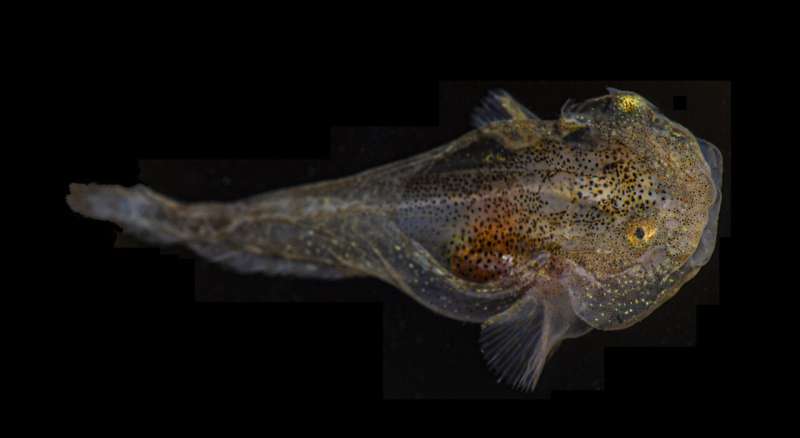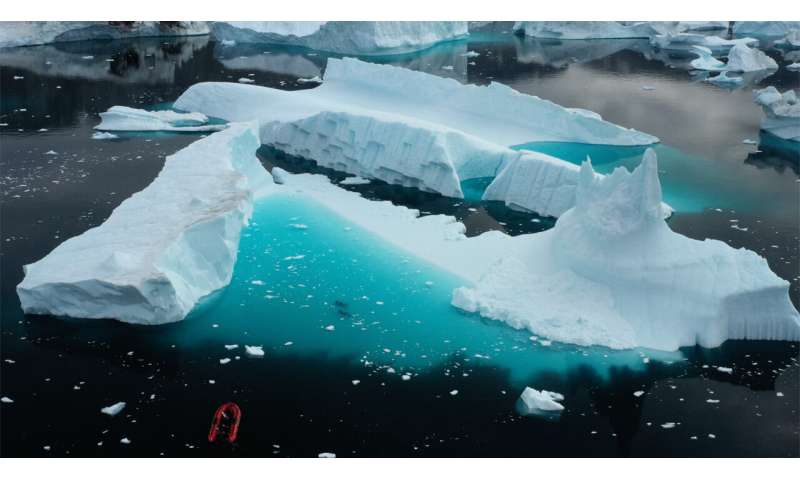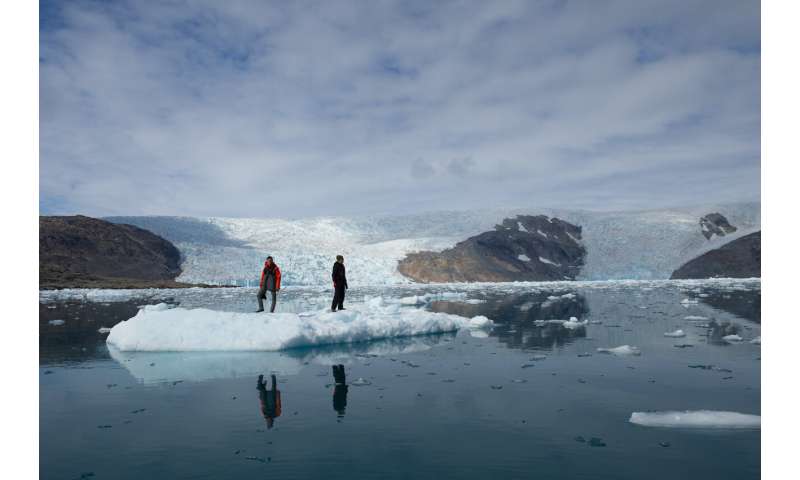Fish 'chock-full' of antifreeze protein found in iceberg habitats off Greenland

New research based on an expedition to the icy waters off Greenland reveals soaring levels of antifreeze proteins in a species of tiny snailfish, underlying the importance of this unique adaptation to life in sub-zero temperatures. The study, led by scientists at the American Museum of Natural History and the City University of New York (CUNY), and published today in the journal Evolutionary Bioinformatics, also warns that warming oceanic temperatures in the Arctic could pose a threat to these highly specialized fishes.
"Similar to how antifreeze in your car keeps the water in your radiator from freezing in cold temperatures, some animals have evolved amazing machinery that prevent them from freezing, such as antifreeze proteins, which prevent ice crystals from forming," said David Gruber, a research associate at the museum and a distinguished biology professor at CUNY's Baruch College. "We already knew that this tiny snailfish, which lives in extremely cold waters, produced antifreeze proteins, but we didn't realize just how chock-full of those proteins it is—and the amount of effort it was putting into making these proteins."
The icy waters of polar oceans are an extreme environment for marine life, limiting inhabitants to those with mechanisms to cope with freezing temperatures. Unlike some species of reptiles and insects, fishes cannot survive even partial freezing of their body fluids, so they depend on antifreeze proteins, made primarily in the liver, to prevent the formation of large ice grains inside their cells and body fluids. The ability of fishes to make these specialized proteins was discovered nearly 50 years ago, and scientists have since determined that antifreeze proteins are made from five different gene families.
Gruber and co-author John Sparks, a curator in the museum's Department of Ichthyology, decided to investigate the antifreeze proteins of the juvenile variegated snailfish, Liparis gibbus, after encountering a separate exceptional ability of the tiny fish—biofluorescence. In 2019, as part of a Constantine. S. Niarchos Expedition, Sparks and Gruber were exploring the iceberg habitats off the coast of Eastern Greenland when they found a juvenile variegated snailfish glowing in green and red. Biofluorescence, the ability to convert blue light into green, red, or yellow light, is rare among Arctic fishes—where there are prolonged periods of darkness—and the snailfish remains the only polar fish reported to biofluoresce.
Upon further investigation of the biofluorescent properties of snailfish, the researchers found two different types of gene families encoding for antifreeze proteins. The snailfish genes have the highest expression levels of antifreeze proteins ever observed, highlighting their importance to these animals' survival and sending up a red flag about how they might fare in warming environmental conditions.
"Since the mid-20th century, temperatures have increased twice as fast in the Arctic as in mid-latitudes and some studies predict that if Arctic sea ice decline continues at this current rate, in the summer the Arctic Ocean will be mostly ice-free within the next three decades," Sparks said. "Arctic seas do not support a high diversity of fish species, and our study hypothesizes that with increasingly warming oceanic temperatures, ice-dwelling specialists such as this snailfish may encounter increased competition by more temperate species that were previously unable to survive at these higher northern latitudes."
-

The study site showing the iceberg habitat in Greenland where Liparis gibbus was collected. The dive boat can be seen at the bottom left, and the divers are visible near the center of the image. Credit: Peter Kragh -

Study lead authors David Gruber (left) and John Sparks (right) on an iceberg in eastern Greenland. Credit: Peter Kragh
Other authors on this study include John Burns, American Museum of Natural History and the Bigelow Laboratory for Ocean Sciences; Jean Gaffney, CUNY; and Mercer Brugler, American Museum of Natural History and the University of South Carolina Beaufort.
More information: John A Burns et al, Transcriptomics of a Greenlandic Snailfish Reveals Exceptionally High Expression of Antifreeze Protein Transcripts, Evolutionary Bioinformatics (2022). DOI: 10.1177/11769343221118347
Provided by American Museum of Natural History




















